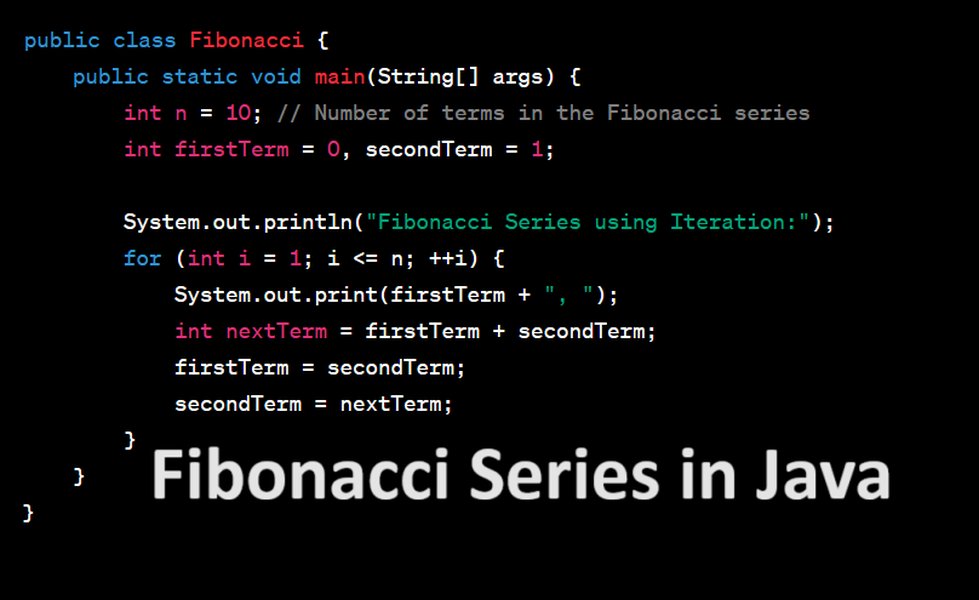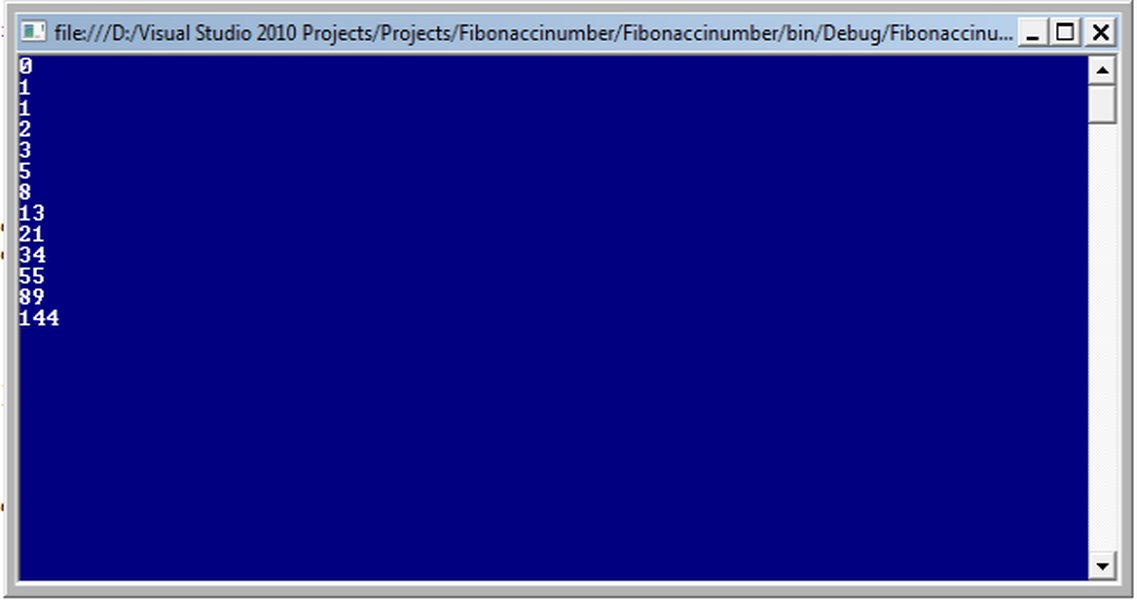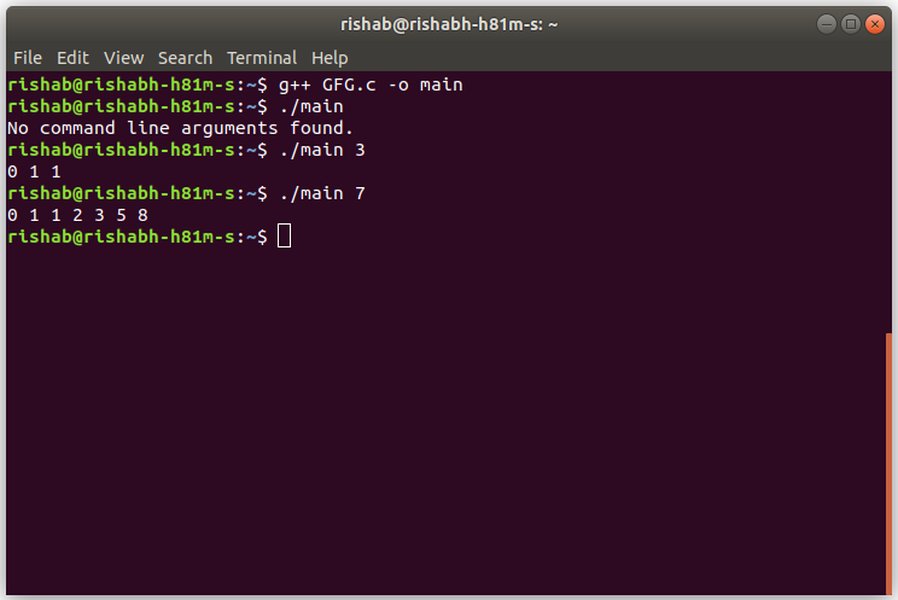
Unlock the Secrets of Fibonacci in C#: From Basic Loops to Advanced Techniques
Discover various methods to implement the Fibonacci sequence in C#, complete with code examples, performance insights, and best practices.
The Fibonacci sequence is a fascinating mathematical series where each number is the sum of the two preceding ones, typically starting with 0 and 1. This sequence appears in various natural phenomena and has numerous applications in computer science. In C#, there are several ways to generate Fibonacci numbers or the entire sequence, each with its own trade-offs in terms of performance, readability, and memory usage. This guide will walk you through the most common and effective methods.
Essential Insights: Key Takeaways
- Iterative methods are generally preferred for performance and scalability, especially when dealing with large numbers in the sequence.
- Recursive solutions, while elegant, can be inefficient due to repeated calculations, but can be optimized using techniques like memoization.
BigIntegeris crucial for handling large Fibonacci numbers, as they grow rapidly and can quickly exceed the capacity of standard integer types likeintorlong.
Understanding the Fibonacci Sequence
Mathematically, the Fibonacci sequence \( F(n) \) is defined as:
\[ F(0) = 0 \] \[ F(1) = 1 \] \[ F(n) = F(n-1) + F(n-2) \quad \text{for } n > 1 \]The sequence thus begins: 0, 1, 1, 2, 3, 5, 8, 13, 21, 34, and so on.

A visual depiction of how Fibonacci numbers are derived from preceding terms.
Core Implementation Approaches in C#
Let's explore the primary methods for generating Fibonacci numbers in C#.
1. Iterative Approach
The iterative approach is generally the most efficient method for generating the Fibonacci sequence or finding a specific Fibonacci number. It avoids the overhead of recursive function calls and redundant calculations.
Using a for loop (Generating the Series)
This method builds the sequence step-by-step, keeping track of the last two numbers to calculate the next.
using System;
using System.Collections.Generic; // For List
using System.Numerics; // For BigInteger
public class FibonacciIterative
{
public static List<BigInteger> GenerateFibonacciSeries(int length)
{
List<BigInteger> series = new List<BigInteger>();
if (length <= 0) return series;
BigInteger a = 0;
BigInteger b = 1;
if (length >= 1) series.Add(a);
if (length >= 2) series.Add(b);
for (int i = 2; i < length; i++)
{
BigInteger next = a + b;
series.Add(next);
a = b;
b = next;
}
return series;
}
public static void Main(string[] args)
{
int count = 10;
List<BigInteger> fibSequence = GenerateFibonacciSeries(count);
Console.WriteLine($"Fibonacci Series (first {count} terms):");
foreach (BigInteger num in fibSequence)
{
Console.Write(num + " "); // Output: 0 1 1 2 3 5 8 13 21 34
}
Console.WriteLine();
}
}
Explanation:
The code initializes the first two Fibonacci numbers (0 and 1). It then iterates length - 2 times, calculating each subsequent Fibonacci number by adding the previous two and updating the tracking variables. Using BigInteger allows for the generation of very large Fibonacci numbers without overflow issues.

Example console output showing a generated Fibonacci series.
Using a `while` loop (Generating up to a limit)
A `while` loop can also be used, often useful when you want to generate numbers until a certain condition (e.g., number of terms) is met.
using System;
using System.Numerics;
public class FibonacciWhileLoop
{
public static void PrintFibonacciSeries(int limit)
{
if (limit <= 0) return;
BigInteger a = 0;
BigInteger b = 1;
int count = 0;
Console.WriteLine("Fibonacci Series (while loop):");
while (count < limit)
{
if (count == 0)
{
Console.Write(a + " ");
count++;
if (count >= limit) break;
}
if (count == 1)
{
Console.Write(b + " ");
count++;
if (count >= limit) break;
}
BigInteger next = a + b;
Console.Write(next + " ");
a = b;
b = next;
count++;
}
Console.WriteLine();
}
public static void Main(string[] args)
{
PrintFibonacciSeries(10); // Output: 0 1 1 2 3 5 8 13 21 34
}
}
2. Recursive Approach
The recursive approach directly translates the mathematical definition of the Fibonacci sequence. While elegant, it's generally inefficient for larger values of `n` due to repeated calculations of the same Fibonacci numbers, leading to an exponential time complexity (O(2n)).
using System;
using System.Numerics;
public class FibonacciRecursive
{
public static BigInteger GetNthFibonacciRecursive(int n)
{
if (n < 0) throw new ArgumentException("Input must be a non-negative integer.");
if (n == 0) return 0;
if (n == 1) return 1;
return GetNthFibonacciRecursive(n - 1) + GetNthFibonacciRecursive(n - 2);
}
public static void Main(string[] args)
{
int n = 9; // Calculate the 9th Fibonacci number (0-indexed)
// For a series, you'd call this in a loop:
Console.WriteLine($"Fibonacci Series (recursive, first {n+1} terms):");
for (int i = 0; i <= n; i++)
{
Console.Write(GetNthFibonacciRecursive(i) + " "); // Output for n=9: 0 1 1 2 3 5 8 13 21 34
}
Console.WriteLine();
// BigInteger nthValue = GetNthFibonacciRecursive(n);
// Console.WriteLine($"The {n}th Fibonacci number (recursive) is: {nthValue}"); // Output for n=9: 34
}
}
Caution: This naive recursive approach is very slow for `n` larger than around 30-40 and can lead to `StackOverflowException` for even moderately larger values due to deep recursion depth.
3. Dynamic Programming: Memoization (Optimized Recursion)
To overcome the inefficiency of the naive recursive approach, memoization (a form of dynamic programming) can be used. This involves storing the results of expensive function calls and returning the cached result when the same inputs occur again.
using System;
using System.Collections.Generic;
using System.Numerics;
public class FibonacciMemoization
{
private static Dictionary<int, BigInteger> memo = new Dictionary<int, BigInteger>();
public static BigInteger GetNthFibonacciMemoized(int n)
{
if (n < 0) throw new ArgumentException("Input must be a non-negative integer.");
if (memo.ContainsKey(n)) return memo[n];
BigInteger result;
if (n == 0) result = 0;
else if (n == 1) result = 1;
else result = GetNthFibonacciMemoized(n - 1) + GetNthFibonacciMemoized(n - 2);
memo[n] = result;
return result;
}
public static void Main(string[] args)
{
int count = 40; // Can now handle larger numbers efficiently
Console.WriteLine($"The {count}th Fibonacci number (memoized recursive) is: {GetNthFibonacciMemoized(count)}");
// Example: The 40th Fibonacci number is 102334155
}
}
Memoization significantly improves performance for the recursive approach, bringing its time complexity closer to O(n) because each Fibonacci number is computed only once.
4. Dynamic Programming: Tabulation (Bottom-Up)
Tabulation is another dynamic programming technique that builds up the solution iteratively from the base cases. It's essentially what the standard iterative `for` loop approach does, often using an array to store intermediate results.
using System;
using System.Numerics;
public class FibonacciTabulation
{
public static BigInteger GetNthFibonacciTabulation(int n)
{
if (n < 0) throw new ArgumentException("Input must be a non-negative integer.");
if (n == 0) return 0;
if (n == 1) return 1;
BigInteger[] fibNumbers = new BigInteger[n + 1];
fibNumbers[0] = 0;
fibNumbers[1] = 1;
for (int i = 2; i <= n; i++)
{
fibNumbers[i] = fibNumbers[i - 1] + fibNumbers[i - 2];
}
return fibNumbers[n];
}
public static void Main(string[] args)
{
int n = 10;
Console.WriteLine($"The {n}th Fibonacci number (tabulation) is: {GetNthFibonacciTabulation(n)}"); // Output: 55
}
}
This method is also O(n) in time complexity and O(n) in space complexity due to the array. The simple iterative approach without an explicit array (using only two variables to store previous values) achieves O(1) space complexity.

An illustration of C# code related to Fibonacci sequence generation.
5. Using `yield return` for Lazy Evaluation
For generating potentially very long sequences where you don't want to store the entire sequence in memory at once, `yield return` can be used. This creates an iterator that generates Fibonacci numbers on demand.
using System;
using System.Collections.Generic;
using System.Numerics;
public class FibonacciYield
{
public static IEnumerable<BigInteger> GenerateFibonacciSequence(int count)
{
if (count <= 0) yield break;
BigInteger a = 0;
BigInteger b = 1;
yield return a;
if (count == 1) yield break;
yield return b;
if (count == 2) yield break;
for (int i = 2; i < count; i++)
{
BigInteger next = a + b;
yield return next;
a = b;
b = next;
}
}
public static void Main(string[] args)
{
Console.WriteLine("Fibonacci Sequence (using yield return, first 10 terms):");
foreach (BigInteger num in GenerateFibonacciSequence(10))
{
Console.Write(num + " "); // Output: 0 1 1 2 3 5 8 13 21 34
}
Console.WriteLine();
}
}
This approach is memory-efficient as it only computes one number at a time when requested by the `foreach` loop (or other LINQ operations).
Comparing Fibonacci Implementation Approaches
The choice of implementation depends on factors like the required performance, the size of `n`, and memory constraints. The following radar chart provides a visual comparison of different approaches based on common criteria. Note that these are qualitative assessments.
The chart visually represents how different methods excel in certain areas. For instance, the iterative approach scores high on efficiency and scalability, while naive recursion, though simple in logic, suffers in performance and memory for large inputs. Memoized recursion offers a balance, improving efficiency significantly over naive recursion.
Visualizing Fibonacci Concepts with a Mindmap
This mindmap illustrates the core concepts and relationships involved in implementing the Fibonacci sequence in C#, highlighting different methods and key considerations like data types and optimization.
F(n) = F(n-1) + F(n-2)
F(0)=0, F(1)=1"] id2["Implementation Methods"] id2_1["Iterative"] id2_1_1["For Loop
(Efficient, O(n) time, O(1) space)"] id2_1_2["While Loop
(Similar to For Loop)"] id2_1_3["Using `yield return`
(Memory efficient, lazy evaluation)"] id2_2["Recursive"] id2_2_1["Naive Recursion
(Elegant, O(2^n) time, risk of StackOverflow)"] id2_2_2["Optimized Recursion (Memoization)
(Dynamic Programming, O(n) time, O(n) space)"] id2_3["Dynamic Programming (Tabulation)"] id2_3_1["Bottom-up using Array
(O(n) time, O(n) space)"] id3["Key Considerations"] id3_1["Performance
(Iterative > Memoized Recursive > Naive Recursive)"] id3_2["Integer Overflow
(Use `BigInteger` for large N)"] id3_3["Memory Usage
(`yield` and iterative O(1) space are best)"] id3_4["Readability vs Efficiency"] id4["Applications"] id4_1["Algorithms & Data Structures"] id4_2["Mathematical Puzzles"] id4_3["Game Development (e.g., procedural generation)"] id4_4["Financial Modeling (less common directly)"]
The mindmap provides a quick overview of the landscape of Fibonacci implementations in C#, helping to understand the connections between different techniques and important factors to consider when choosing an approach.
Summary Table of Approaches
Here's a table summarizing the characteristics of the discussed Fibonacci generation methods in C#:
| Approach | Time Complexity | Space Complexity | Pros | Cons |
|---|---|---|---|---|
| Iterative (Loop) | O(n) | O(1) (if not storing series) / O(n) (if storing series) | Highly efficient, low memory, easy to understand. | Slightly more verbose than naive recursion. |
| Recursive (Naive) | O(2n) | O(n) (due to call stack) | Elegant, directly maps to mathematical definition. | Very inefficient for n > 30-40, risk of stack overflow. |
| Recursive (Memoized) | O(n) | O(n) (for memoization table and call stack) | Combines elegance of recursion with efficiency. | Requires extra space for memoization. |
| Dynamic Programming (Tabulation with Array) | O(n) | O(n) (for array) | Efficient, avoids recursion overhead. | Requires O(n) space for the table. |
| Iterative (using `yield return`) | O(n) (amortized per element) | O(1) (for generator state) | Memory efficient for large sequences, lazy evaluation. | Slightly more complex logic for iterator state. |
This table helps in selecting the most appropriate method based on specific requirements like performance, memory limitations, and the number of Fibonacci terms needed.
Video Tutorial: Fibonacci Sequence in C#
For a visual walkthrough and further explanation, the following video provides a practical demonstration of coding the Fibonacci sequence in C#. It covers some of the fundamental concepts discussed above.
This tutorial, "How To Code The Fibonacci Sequence In C# | Programming ...", offers a step-by-step guide to implementing a Fibonacci sequence calculator, which can be a valuable supplement to the textual explanations and code examples provided here.
Frequently Asked Questions (FAQ)
Recommended Further Exploration
To deepen your understanding or explore related topics, consider these queries:
- How can matrix exponentiation achieve O(log n) performance for Fibonacci numbers in C#?
- What are common strategies for optimizing other recursive algorithms in C#?
- What are other practical applications of BigInteger in C# for complex mathematical computations?
- How do iterators and the `yield return` statement work in-depth in C#?
References
This response was synthesized using information from several sources, including:
Last updated May 6, 2025